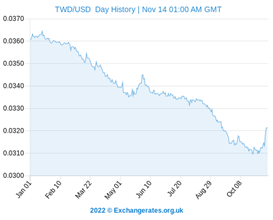Currency mismatch piles pressure on Asia underwriting
November 16 2022 by Karen Lai
The strengthening of the US dollar on the back of the US Federal Reserve’s hawkish policy stance has left Asian insurers with a significant challenge from assets and liabilities, especially due to currency mismatches.
As the (re)insurance industry stares at a capacity crunch, there is more focus on the asset side of the business, and hence asset-liability management (ALM).
“The US dollar has strengthened considerably against other currencies, and that’s another constraint on overall capacity. Most of the reduction of capital in the industry is caused by a reduction in asset values rather than underwriting losses,” said a senior executive of a global reinsurance broker. “And most of that’s on the fixed-income bond side.”
Insurers have been adopting a more defensive investment line. “In Europe and APAC, what we basically see is insurance companies have a much more conservative investment behaviour right now,” said Thomas Gillmann, insurance strategy and advisory of APAC for global asset manager DWS Group.
First of all, the economic outlook is not too positive at the moment. Secondly, insurance companies can also now afford to invest more conservatively, because of the rising interest rates.
If you’re investing in government bonds or investment grade corporate bonds, you also already get a decent yield again, so they really can afford to maybe switch from high yield investments more into investment grade investments again.
While currency mismatch is a problem impacting nearly all non-US (re)insurers, the problem is deeper in Asia because of the lack of a deep local currency bond market.
“In general, the fixed income markets are not very deep and broad in Asia Pacific. Therefore, insurance companies in the region are significantly invested into US fixed income assets such as investment grade US corporate bonds or US treasuries,” Gillmann said.
“It’s just a structural challenge that they don’t have enough assets to match their liabilities. So they need to invest overseas,” he noted. “I would say, this is the key challenge for insurance companies in Asia in general.”

We see more countries and jurisdictions moving towards more advanced risk-based solvency regimes. And under these regimes, they typically try to avoid ALM mismatch risks that are not really rewarded.
Thomas Gillmann, DWS Group
Taiwan focus
In the region, the problem is more pronounced among Taiwanese insurers because of their exposure to foreign currency-linked assets. Taiwan’s insurance regulator, the Financial Services Commission, had in March last year, relaxed the foreign investment limit for insurers from 35% to 40%.
“Over the years Taiwanese life insurers have increased their foreign currency investments to reduce the duration mismatch, due to inadequate domestic supply of long-term fixed income assets. In the process, the severity of duration mismatch has reduced but that of currency mismatch has increased,” said Anthony Lam, associate director of insurance at Fitch Ratings.
DWS’ Gillmann added: “What we see right now, for example in Taiwan, the yields in the US have increased quite significantly, while the yields in Taiwan dollar have not increased that much, there is an imbalance between assets and liabilities — the value of assets has decreased a lot while the value of liabilities has also decreased, but not that much.”
When insurers, especially life insurers, sell policies that tend to be long-dated for liability-matching assets, they by nature still invest into long-duration assets to match the interest rate sensitivity of longer-dated liabilities.
As insurers issue policies in local currency and invest in foreign currencies, asset currency mismatches are introduced to the book over time. If the currency of the assets depreciates as interest rate increases, the insurance company would not be able to pay its liabilities if it does not hold enough equity to absorb the currency loss.
“Insurance companies often don’t see value in these particular risks,” said Gillmann.
Taking action
In addition, the solvency regime also encourages stricter asset liability management, because under these regimes, in particular, currency risk, as well as interest rate mismatch risks are subjected to a very punitive capital charge.
Gillmann added, “We see more countries and jurisdictions moving towards more advanced risk-based solvency regimes. And under these regimes, they typically try to avoid ALM mismatch risks that are not really rewarded.”
Macroeconomic realities have been reshaping insurers’ approach to products. With high capital charges chipping away at their solvency ratios, insurers are shifting towards more capital-light products.
“They are shifting from traditional guaranteed products to investment-linked products, because for these products, they don’t have to hold significant capital for the investment risks, because the investment risks are basically borne by the policyholders and not by the insurance company,” said Gillmann.
-
APAC’s block life reinsurance market to thrive amid regulatory changes and capital optimisation, but oversight looms
- June 30
Japan has been home to some of the larger deals, but demand is also seen in the likes of Hong Kong, Singapore, South Korea and Taiwan.
-
Insuring prosperity: APAC’s dynamic fine art and specie market in the frame as risk landscape, extreme weather drive demand
- June 26
As China's influence wanes, markets like Japan, South Korea, and Singapore are gaining traction, with family offices and new private museums in nearby regions driving demand for coverage and competition.
-
In unique Asia, underwriters look to stay dialed amid ‘unprecedented wave’ of cyber attacks
- June 24
A surge in cyberattacks is likely behind a 14% rise in large cyber claims in Asia during the first half of last year, with a new report shining a light on attacks on the financial services sector.
-
Strait of Hormuz tanker collision highlights dark fleet dangers, but not seen as war event
- June 19
Adalynn and Front Eagle collided on Tuesday in the Strait of Hormuz amid the ongoing tensions between Iran and Israel.
-
Allianz General | Allianz General combines innovative protection solutions while powering social good to lead Malaysian market
The carrier proactively addresses emerging risks and evolving customer protection needs while giving back to the community.
-
Sedgwick | Asia’s Energy Transformation – Balancing Growth, Risk and Renewables
Energy market presents unique risks, especially in a region which includes China and Japan as well as developing nations like Vietnam and the Philippines.
-
Beazley | Turbulent Waters: the maritime energy transition challenge
Businesses are facing a complex transition to non-carbon energy sources amid a push to achieve net-zero emissions for the marine sector by 2050.
-
Aon | Navigating shifts in the global and Asia insurance markets
Neelay Patel, Aon head of growth for Asia, says the market in Asia is at an ‘interesting stage of the cycle’.

